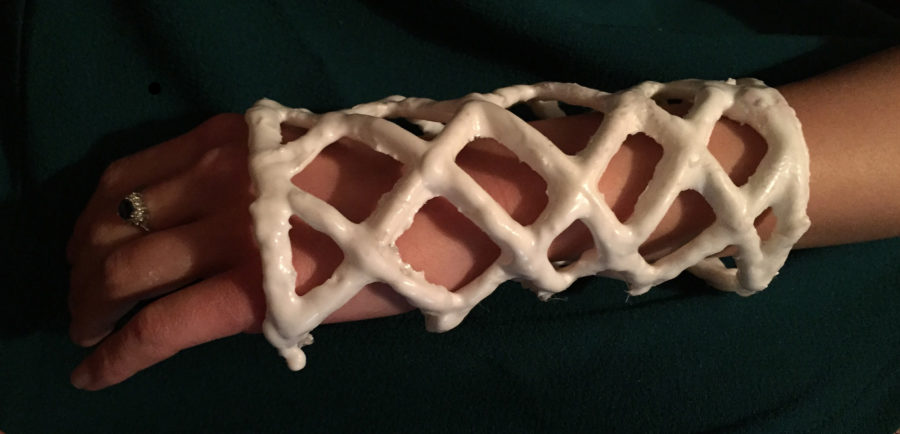Student startup reinvents the cast
Photo of Cast21prototype in Champaign, IL.
Mar 27, 2016
Last updated on May 5, 2016 at 03:24 p.m.
A student project turned startup company completely reinvented the cast.
The startup, Cast21, was formed by three University students who came up with the idea as a part of their senior design project in Fall 2015.JT
Essentially, they wanted to solve the common problems associated with the fiberglass cast, the most commonly used cast.JT
“We wanted to design a better cast because personally, I’ve spent almost three years of my life in casts … I’ve experienced a lot of the problems that are commonly associated with casts,” said Jason Troutner, senior in Engineering and chief technology officer of Cast21.JT
Get The Daily Illini in your inbox!
“As engineers, we looked at the casts that are currently used. We looked at how they functioned and really thought that there’s a much better way to achieve the same purpose without all of these negative side effects.”
Their redesigned cast is made from a series of hollow tubes that form a lattice structure. The tubes can be formed around the patient’s body so that gives a custom fit. Then, the tubes are filled with a liquid polymer that hardens within 30 minutes. Once the polymer is hard, the cast is complete.JT
“Most importantly, it’s waterproof. It doesn’t retain any moisture,” said Ashley Moy, senior in engineering and biomedical design engineer of Cast21.JT “This reduces the itchiness (and) the bacteria buildup that can lead to infection.”
Troutner said the lattice structure exposes most of the skin and the affected area to the air.
“So it won’t trap water, sweat, bacteria and heat … like a current cast would, and it also allows the patient to wash his or her hands and shower and swim,” he said.
They proceeded to turn their project into a startup so that they could get their product into the market.
“The thing we really wanted to be able to do was mass produce this sort of stuff,” said Justin Brooks, senior in Engineering and chief operating officer of Cast21.JT
While other alternative versions of cast models use 3-D printing, Brooks said they wanted to stay away from that method of production because it is more costly and time-consuming.JT
“The big problem with 3-D printing casts is that it’s very slow and that it’s very expensive,” he said. “That means that only a select few people can get it … a lot of times insurance is not going to cover the extra costs that it would take to make a 3-D printed cast.”
Cast21 is also recently part of the iVenture accelerator, an educational accelerator for top student startups at the University, which means they can continue their work after they graduate.JT
In addition to the cast itself, Cast21 has also developed two electrical components that can aid in the recovery process. The first is a vibration therapy system, and the second is an electrical muscle stimulator . These add-ons are removable so that they can maintain the casts’ water resistance and can be used for up to 20 to 30 minutes per day.JT
The vibration therapy system can help with bone growth, and the electrical muscle stimulator can aid in reducing muscle loss while the cast is on, Moy said.
“Caught early enough, the bone healing process could be sped up so best case scenario about a week would be shaved off of the actual wearing of the cast,” she said. “And then best case scenario for the muscle loss, that would completely remove any time needed to be spend in physical therapy.”






